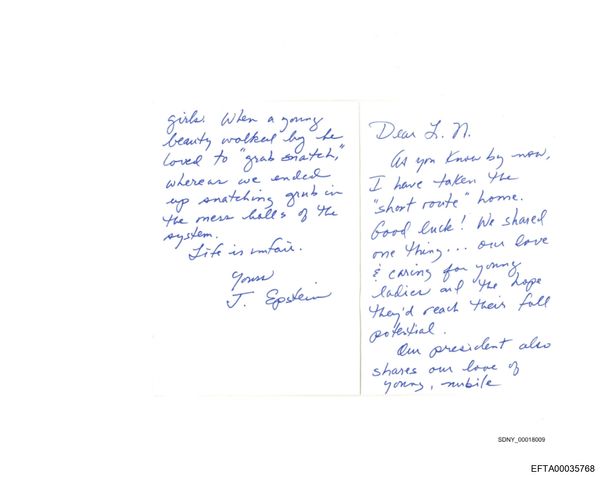A new president with an ambitious agenda. Stark ideological divisions within both parties. And a deeply divided House with Republicans holding a slender majority.
Those are some of the dynamics that will be in play during the 119th Congress. But Democrats and Republicans are already looking at the 2026 midterm elections.
“[We’re] going to be on offense to hold our House GOP majority in 2026,” North Carolina Rep. Richard Hudson, who leads the National Republican Congressional Committee, said on social media last month. “Let’s get to work!’’
Democrats, meanwhile, are already looking for every opportunity to loosen the GOP’s narrow majority, including the recent Republican infighting over the government funding extension. But their earliest chances to do so — special elections to succeed Republican House members, including two poised to join the Trump administration — will be tough lifts. Those are set to take place in deep-red territory.
“House Republicans have reminded everyone AGAIN that they only care about doing what Donald Trump & Elon Musk tell them to,” Washington Rep. Suzan DelBene, who chairs the Democratic Congressional Campaign Committee, said on social media before the close of the previous Congress. “And the first chance voters will get to weigh in will be the midterms, and these irresponsible decisions will cost House Republicans the majority.”
CQ Roll Call is taking an initial look at House members who could be vulnerable in 2026, grouped by categories. But with the midterm elections almost two years away, a lot can be expected to change between now and Nov. 3, 2026.
New York and California
Two blue states, New York and California, have been key House battlegrounds in recent election cycles, and 2026 should be no different, with both parties defending competitive seats in both states.
Eight districts in California were decided by 5 points or less in 2024. They include the Central Valley seat of Democrat Adam Gray, who defeated Republican Rep. John Duarte by fewer than 200 votes. Two Southern California Democrats — George Whitesides, who knocked off GOP Rep. Mike Garcia, and Derek Tran, who unseated Republican Rep. Michelle Steel by just over 650 votes — likely start off among the most vulnerable members.
A handful of districts in New York will likely be competitive again too. Democratic Rep. Laura Gillen, who defeated GOP Rep. Anthony D’Esposito on Long Island, will fight for a second term in an area where local Republicans have seen a resurgence in recent years, while fellow Democratic Rep. Tom Suozzi could also face another close race. Districts north of New York City, like the 17th, where Republican Mike Lawler won a second term, and the 19th, where Democrat Josh Riley ousted GOP Rep. Marc Molinaro, will likely be on party target lists. Lawler is considered a potential gubernatorial candidate in 2026, and an open seat might be easier for Democrats to flip.
One policy debate could shape the fate of Republicans in high-tax states, including New York and California: whether a 2017 tax law provision that placed a $10,000 cap on state and local tax deductions is renewed, and if so, in what way. Republican lawmakers in both states are among those leading the push to eliminate or raise the cap.
Blue Dogs and rural Democrats
Reps. Jared Golden of Maine and Marie Gluesenkamp Pérez of Washington state have proved they can succeed in Republican-leaning territory, although both can expect to once again be GOP targets this cycle. Golden won a fourth term in November by less than a point as Trump carried his seat by 10 points.
Two other members of the moderate Blue Dog Coalition, Reps. Henry Cuellar and Vicente Gonzalez, scraped by in South Texas border districts that are predominantly Latino, a demographic that has grown more Trump-friendly in recent years.
And the president-elect’s robust appeal among rural voters could test Democrats like Rep. Don Davis, a non-Blue Dog who won a second term to his eastern North Carolina seat by less than 2 points.
Close margins
Beyond California, New York and Blue Dog territory, members who eked out victories in close races are likely to wind up as top targets in 2026.
They include Republicans such as Iowa Rep. Mariannette Miller-Meeks, who won a third term by less than a percentage point, or about 788 votes. That’s still a more comfortable margin than her six-vote edge in 2020. Colorado freshman Gabe Evans had the second-narrowest victory among House Republicans, flipping a seat north of Denver by just under 2,500 votes. And Nebraska Rep. Don Bacon, a perennial Democratic target, narrowly won a fifth term as Kamala Harris was carrying his Omaha-area district.
Republican Nick Begich III entered Congress after defeating Democratic Rep. Mary Peltola by 2 points for Alaska’s at-large seat. While the state typically votes red, its ranked choice voting system could keep the door open for a future competitive race.
Ideological warriors
Republicans who are philosophically opposed to raising the debt limit have already tangled with Trump over a stopgap spending measure that included language to suspend the borrowing cap for two years. One prominent conservative critic of the bill, Texas Rep. Chip Roy, was singled out by Trump, who expressed hope that challengers will “go after Chip” in a primary. Roy wasn’t the only GOP member to reject the measure: In all, 38 Republicans voted against it.
Mike Johnson’s election as speaker last week also showcased GOP divides. Ultimately, only one Republican, Kentucky’s Thomas Massie, voted against Johnson after two other holdouts, Ralph Norman of South Carolina and Keith Self of Texas, switched their votes. Trump was firmly behind Johnson, who was elected on the first ballot. Former Rep. Mick Mulvaney, Trump’s onetime acting chief of staff whom Norman succeeded in the House, offered to help target the congressman last week.
Trump has regularly used his sway with GOP voters to target Republicans he views as disloyal. Freshman Rep. John McGuire had Trump’s backing when he narrowly defeated Freedom Caucus Chairman Bob Good in a competitive primary in Virginia last year.
Democrats have their own ideological rifts. The party saw a number of divisive primaries in 2024, several of them targeting progressives and fueled by pro-Israel super PACs. This time around, philosophical splits within the party could leave Democrats across the political spectrum vulnerable. Massachusetts Rep. Seth Moulton, whose postelection comments suggesting the party’s support for transgender athletes is part of the reason why Democrats lost, has already drawn promises to find primary opponents. The Boston Globe reported last month that Dan Koh, a former Andover, Mass., selectman and aide to former Boston Mayor Marty Walsh, is considering a run.
New battlegrounds?
Both parties will look to expand their offensive opportunities in 2026. In a memo released last month, House Majority PAC, a super PAC focused on electing Democrats to the House, includes several new GOP targets, including Eli Crane of Arizona, Kevin Kiley of California, Bill Huizenga of Michigan and Rob Wittman of Virginia.
Meanwhile, Republican hopes have been bolstered by Trump’s stronger-than-expected performance in traditionally blue territory, such as the suburban New Jersey district won by Democratic Rep. Nellie Pou. The president-elect’s gains in red states like Florida could expand the battleground House map further still.
Redistricting redux
A few states could have new congressional maps for the 2026 midterms. Expected new lines in Ohio could endanger Democratic Reps. Marcy Kaptur, the longest-serving woman in the House, and Emilia Sykes.
Pending court cases in several states could also lead to redrawn maps, including in Alabama and Louisiana, where Democrats Shomari Figures and Cleo Fields, respectively, picked up seats last fall that were drawn to include substantial Black populations.
Impeachment Republicans
Just two House Republicans who voted to impeach Trump for “incitement of an insurrection” after the Jan. 6, 2021, assault on the Capitol remain in Congress. But Reps. Dan Newhouse of Washington and David Valadao of California won reelection in 2024, although Newhouse had to dispatch Trump-backed challengers from the right in the primary and in the general election.
Eyes elsewhere?
Most gubernatorial contests are still taking shape, but a number of House members have sent signals that they are at least pondering running for their state’s highest office, including in New York (Lawler and Democrat Ritchie Torres), Tennessee (Republicans Tim Burchett and Andy Ogles), South Dakota (Republican Dusty Johnson), Colorado (Democrat Jason Crow), Pennsylvania (Republican Dan Meuser), Florida (Republican Byron Donalds) and South Carolina (Republicans Norman and Nancy Mace). Most of these seats would be expected to remain in party hands should the incumbents bolt for gubernatorial runs.
But first, there are the 2025 state elections in New Jersey and Virginia, where former or current House members are seeking the governor’s mansion. Virginia Democrat Abigail Spanberger, who opted against reelection last year to focus on her gubernatorial bid, could face a primary challenge from Rep. Robert C. “Bobby” Scott, who is keeping the door open on a run. And in New Jersey, two incumbent Democrats, Josh Gottheimer and Mikie Sherrill, are part of a crowded field vying for the Garden State’s governorship.
The post An early look at House members who could be vulnerable in 2026 appeared first on Roll Call.







